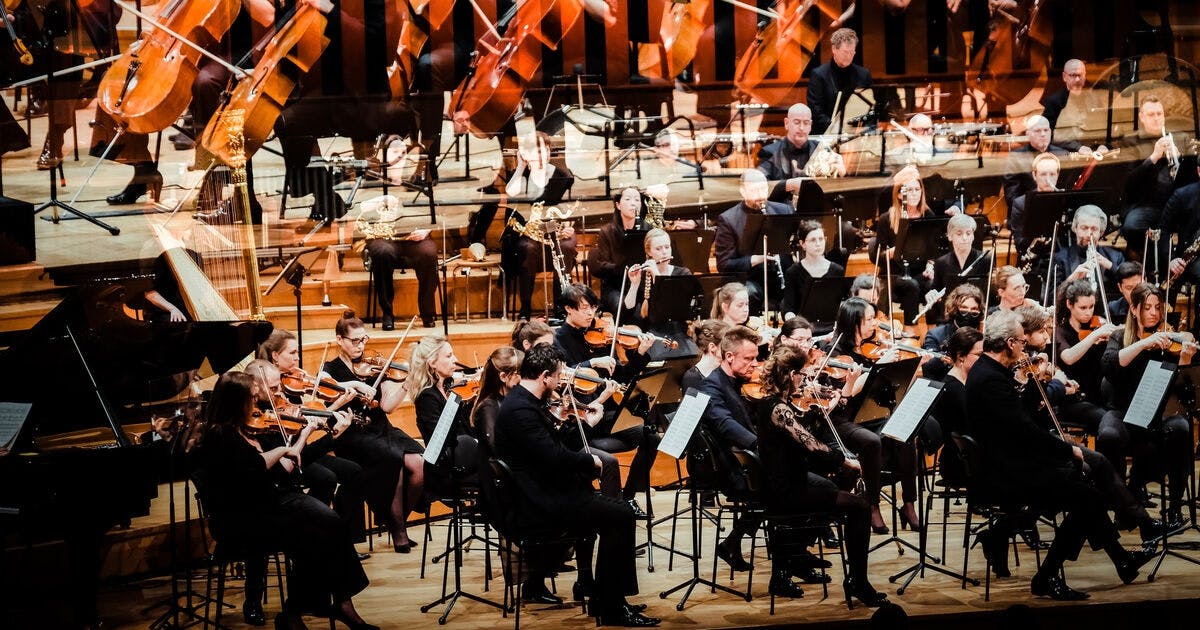********** English **********
Programme for 24 April
Programme
20:00 - 21:30: Concert
By Schumann, Vienna Carnival, Fairy Tales, Trio and Quartet
21:30 - 23:00: Dinner
Dinner and drinks included
About the event
Nour Ayadi has a new CD!
So she'll start off alone, then there'll be two of them, then three, then four,
to help us discover the music of Schumann.
And have you ever been offered dinner in a museum on a Wednesday evening?
Then this counts as an Serendipitous Encounters !
********** Français **********
Programme du 24 Avril
Programme
20:00 - 21:30: Concert
De Schumann , Carnaval de Vienne, Contes de Fées, Trio et Quartet
21:30 - 23:00: Dîner
Dîner et boissons comprises
À propos de l'événement
Nour Ayadi a un nouveau CD !
Alors elle commencera seule, puis ils seront deux, puis trois, puis quatre, à
nous faire découvrir la musique de Schumann.
Et on vous a déjà proposé un dîner dans un musée un mercredi soir ?
Alors ça compte comme Rendez-vous insolites !
Kalliwoda & Mendelssohn
Description
********** English **********
Johann Kalliwoda and Felix Mendelssohn soared to great heights as composers during the 19th century. Each, in their unique way, bridged the gap from pure classicism to the burgeoning ideals of romanticism, and they were both masters of a refined musical style.
Today, Kalliwoda's name may have faded somewhat when compared to Mendelssohn's, yet his music, too, harmoniously combines the principles of classical balance with the energy of Romanticism. His first symphony features an opening movement brimming with intensity, a captivating menuetto, and a robust finale dominated by vigorous counterpoint.
If anything, an even spicier opening was what Mendelssohn, barely 15 years old, wrote for his first symphony. It was not merely an exercise; young Felix had already composed around 13 symphonies for a string orchestra. But only now was he ready to introduce wind instruments and measure himself against the old masters. Their influence is evident - you can taste a touch of Mozart in the style and structure, the foundation of Bach's counterpoint, as well as more contemporary elements from Weber and Beethoven. Mendelssohn was an eager and fertile ground for all those influences, and here showed his genial poise and discipline of lifelong classicist.
Flagey, Brussels Philharmonic
€ 41 > € 5
********** Français **********
Johann Kalliwoda et Felix Mendelssohn ont connu un grand succès en tant que compositeurs au XIXe siècle. Chacun à leur manière, ils ont comblé l'écart entre le classicisme pur et les émergents idéaux romantiques, devenant ainsi des maîtres d'une signature musicale raffinée.
Aujourd'hui, le nom de Kalliwoda peut sembler quelque peu éclipsé par celui de Mendelssohn, bien que sa musique, tout comme celle de Mendelssohn, parvienne à concilier l'équilibre raisonné du classicisme avec l'énergie du romantisme. Sa première symphonie comporte un premier mouvement d'une intensité éclatante, un menuetto captivant et une finale puissante marquée par un contrepoint robuste.
Quant à Mendelssohn, à peine âgé de 15 ans, il a composé une ouverture encore plus vivace pour sa première symphonie. Néanmoins, ce n'était pas une simple épreuve : le jeune Felix avait déjà écrit environ 13 symphonies pour orchestre à cordes. C'est seulement à ce moment qu'il était prêt à introduire des instruments à vent et à se mesurer aux anciens maîtres. Leurs influences sont palpables - on peut discerner une touche de Mozart dans le style et la structure, la base du contrepoint de Bach, ainsi que des éléments plus contemporains empruntés à Weber et Beethoven. Mendelssohn était un terrain fertile pour toutes ces influences et a fait preuve ici de son génie équilibré et de la discipline d'un classique de longue date.
Flagey, Brussels Philharmonic
€ 41 > € 5
********** Nederlands **********
Johann Kalliwoda en Felix Mendelssohn scheerden hoge toppen als componist in de 19e eeuw. Ze sloegen allebei op hun manier de brug van het pure classicisme naar de ontluikende idealen van de romantiek en waren meesters met een verfijnd muzikaal signatuur.
Vandaag is de naam van Kalliwoda misschien wat verbleekt tegenover die van Mendelssohn - terwijl ook zijn muziek het beredeneerde klassieke evenwicht verzoent met de energie van de romantiek. Zijn eerste symfonie bundelt een openingsdeel dat bulkt van de intensiteit, een boeiend menuetto en een krachtige finale gedomineerd door gespierd contrapunt.
Een zo mogelijk nog pittigere opening schreef Mendelssohn, amper 15 jaar oud, voor zijn eerste symfonie. Een echt proefstuk was het echter niet: de jonge Felix pende eerder al zo’n 13 symfonieën voor strijkorkest bij elkaar. Maar pas nu was hij klaar om blazers toe te voegen en de vergelijking met de oude meesters aan te gaan. Die kijken nog mee over zijn schouder - we proeven een flinke portie Mozart in de stijl en structuur, de basis van Bachs contrapunt, maar ook meer eigentijdse invloeden van Weber en Beethoven. Mendelssohn was een gretige en vruchtbare bodem voor al die invloeden, en toonde hier al zijn geniale evenwicht en discipline van levenslange classicist.
Flagey, Brussels Philharmonic
€ 41 > € 5
Billets
Normal
41€
Info & Réservation
Lieu
Organisateur
Vous organisez cet événement ?
Contactez-nous si vous souhaitez mettre à jour les informations et autres.
Nous contacter